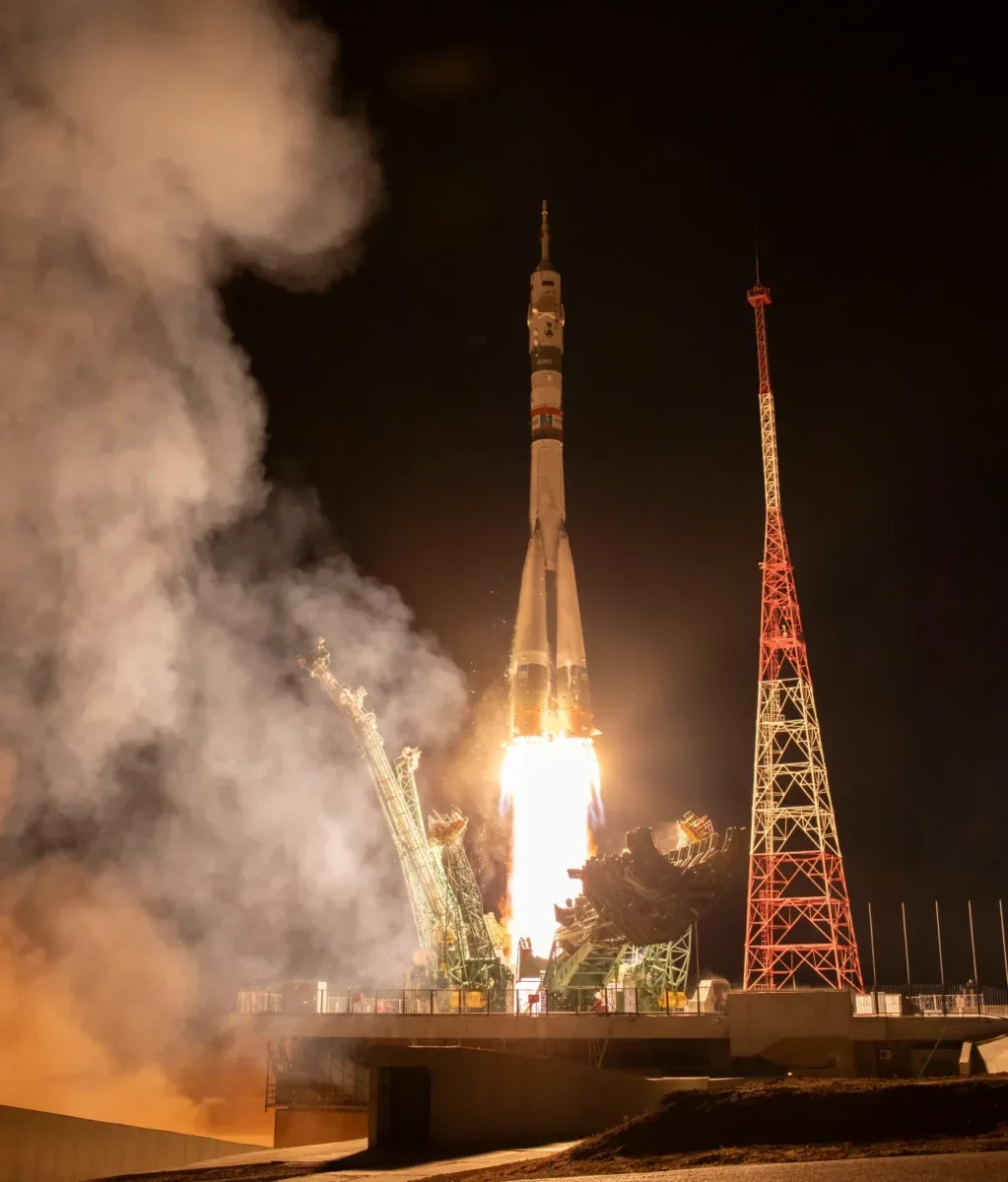
The Expedition 72 crew will lift off aboard a Soyuz rocket from the Baikonur Cosmodrome in Kazakhstan on Sept. 11, 2024. Credit: NASA/Bill Ingalls
When Don Pettit boarded the International Space Station (ISS) on Sept. 11, it was like coming home for him. The 69-year-old chemical engineer already has more than a year in space on three missions to the ISS between 2002 and 2012. But Pettit was hoping for a major first stop after entering his habitat, office and laboratory orbiting Earth for the next six months: the bathroom.
“After the hatches open,” the Silverton, Oregon, native joked in an interview, “and we've given all the congratulatory hugs to our crewmates, I'll probably head straight to the bathroom.”
Not surprisingly, Pettit made a stopover on Russia’s tiny Soyuz MS-26 spacecraft, which lifted off from the remote Baikonur Cosmodrome in Kazakhstan at 9:23 p.m. local time alongside Russian cosmonauts Alexey Ovchinin and Ivan Vagner. The trio orbited Earth twice and then docked with the station’s Rassvet module just over three hours after liftoff, successfully kicking off the next spaceflight for NASA’s oldest active astronaut.
Expedition 72
Awaiting his arrival was the commander of Expedition 71 Oleg Kononenkothe world's most experienced space traveler, with 1,100 days in space (as of Thursday afternoon) spread over a five-mission career. He and Pettit know each other well: They spent 6.5 months together on the station in 2011-2012.
Kononenko and cosmonaut Nikolai Chub are nearing the end of a year-long stint in space. Their Expedition 71 crewmates include Matt Dominick, Mike Barratt, Jeanette Epps, Aleksandr Grebenkin and Tracy Dyson, all residents of the International Space Station since March and set to return home in the coming weeks.
Butch Wilmore and Suni Williams are also on board the station. Their planned one-week stay on the ISS in June was extended to eight months due to technical problems affecting their Boeing Starliner spacecraft. The Starliner returned empty to Earth last weekendWilmore and Williams will land on SpaceX's Dragon Freedom spacecraft next February.
Meanwhile, Soyuz MS-25 will land on September 23, bringing Kononenko and Chub home after 373 days of weightlessness and ending Dyson’s 184-day mission. Before leaving the ISS, Kononenko will hand over command to Ovchinin, thus officially beginning Expedition 72.
On September 24, Crew Dragon Freedom Dragon is scheduled to launch. Two of its four seats will be occupied by Nick Hague and Aleksandr Gorbunov. The empty seats will be filled by Wilmore and Williams when the four return to Earth next spring. And on October 6, Dragon will launch. Endeavor leaves the ISS with Dominick, Barratt, Epps and Grebenkin after 216 days, the longest mission flown by any American crewed spacecraft.
Following these sorties, Expedition 72 will continue into the fall as Ovchinin, Vagner, Pettit, Hague, Gorbunov, Wilmore and Williams begin an intense ramp-up of new spacecraft, science and spacewalks.
They will be visited by five vehicles: two research-carrying Dragons in October and December, two Russian Progress spacecraft in November and February, and the maiden voyage of Sierra Space's Dream Chaser mini-cargo shuttle. Those missions will resupply the International Space Station, facilitating hundreds of scientific and technological investigations.
Spacewalks are also planned. On one in December, Ovchinin and Vagner will install a new X-ray spectrometer. And up to five U.S. spacewalks will gather microbial samples, prepare for upgrades to the International Space Station Deployable Solar Array (IROSA), and place a new silicon tracking layer on the station’s Alpha Magnetic Spectrometer (AMS) to improve its sensitivity.
A long career
For Pettit, Expedition 72 marks a welcome return to his happy place in space. “I’m like a cowboy who wants to be on a horse in the field,” he said. “I’m an astronaut who needs to be sitting on a rocket and flying in space.”
Pettit is one of NASA's longest-serving astronauts. Before being selected by NASA in 1996, he was a scientist at Los Alamos National Laboratory in New Mexico. His first space flight was an accident, but it was marred by tragedy.
In 2001, he joined the backup crew of Expedition 6. But when a prime crew member was grounded for medical reasons the following year, Pettit took his place and launched to the ISS on the shuttle. Endeavor in November 2002.
Three months later, Columbia The rocket disintegrated during reentry, killing its crew and crippling the half-built station. In May 2003, Pettit became one of the first Americans to land on the Russian Soyuz spacecraft. That high-drama homecoming inadvertently involved a steep ballistic reentry that subjected Pettit and his crewmates to severe acceleration loads.
When shuttle missions resumed, Pettit traveled Endeavor Again on STS-126 in November 2008. During that flight, he tested a homemade zero-gravity coffee cup that allowed astronauts to drink coffee without the encumbrance of a straw.
Pettit's coffee cup earned the first patent for an object invented in space. The astronaut intends to make the most of his invention on Expedition 72, bringing out the cups for celebratory events so his crewmates can “drink the way civilization is accustomed to.”
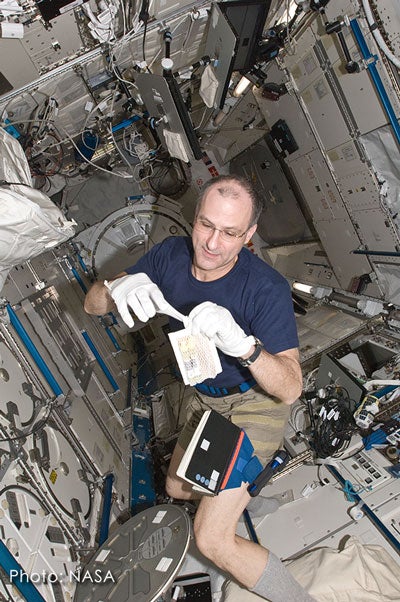
His final mission to the ISS, from December 2011 to July 2012, brought his total days in spacetime to 369, making him the fourth American to spend a year in orbit. During that flight, SpaceX's first Dragon cargo ship visited the ISS. And it was Pettit who radioed Mission Control: “Houston, Station, looks like we've got a dragon by the tail!”
Describing himself on his X (formerly Twitter) profile as an engineer by training, a scientist by trade and an explorer at heart, Pettit rose to fame for his shows “Saturday Morning Science” and “Science Off the Sphere” — impromptu, comedic and often outlandish demonstrations that brought the wonders of weightlessness to audiences on Earth.
In one session, he showed how music from an MP3 player made water droplets oscillate. In another, he demonstrated static electricity using aluminum foil and Lego bricks. And in a third, he played a makeshift didgeridoo made from a vacuum cleaner hose from the International Space Station.
Asked if he had similar plans this time, a mischievous smile creased Pettit’s lips. “Of course,” he said. “I wouldn’t fly into space without doing a scientific or educational demonstration in my spare time.”
That free time also allows him to pursue photography, a passion he has cultivated since sixth grade. The stunning images Pettit takes from the station’s multi-windowed dome range from star trails to the effervescent glow of nighttime city lights on Earth.
During Expedition 72, you plan to photograph at high altitude noctilucent clouds and will observe changes in the Sun as it approaches solar maximum. He will also keep his camera handy for serendipitous events, “because you are there and because you can.”
Sexagenarian space flight
While currently the oldest active-duty astronaut at 69, Pettit is not the first 60-year-old to visit space. That honor belongs to Story Musgrave, who flew on the space shuttle. Columbia in 1996, at the age of 61. Nor is he the oldest astronaut in history. Others have flown into space in their seventies: from Project Mercury hero John Glenn to Virgin mogul Richard Branson, and from Laura Shepard Churchley, daughter of the first American man in space, to the oldest visitor to the International Space Station, Larry Connor, aged 72.
And even more people flew at even older ages. Aviator Wally Funk became the oldest astronaut at age 82. Eighty-year-old Jon Goodwin was the first person with Parkinson’s disease to reach space. And in May 2024, Ed Dwight (sculptor, former aviator, and former candidate to become the first African-American astronaut) flew Blue Origin’s New Shepard capsule to the edge of space, at the age of 90 years and 253 days.
But sexagenarians have carved out their own impressive niche in the annals of space travel. In 2004, Mike Melvill, 63, became the first commercial astronaut when he flew SpaceShipOne to the edge of space. And several over-60s have visited the ISS, including fare-paying tourists Dennis Tito, Gregory Olsen and Charles Simonyi, as well as Axiom private astronauts Michael Lopez-Alegria, Eytan Stibbe, Peggy Whitson and John Shoffner. In 2013, Pavel Vinogradov celebrated his 60th birthday in space. And planetary scientist S. Alan Stern and venture capitalist Lane Bess have flown on suborbital missions with Virgin Galactic and Blue Origin.
When Pettit blasted off this week, he surpassed his Expedition 71 crewmate Barratt, 65, as the oldest person to fly a months-long space mission. When he returns to Earth next April, Pettit will have logged 570 days in space, making him the second-most experienced U.S. astronaut behind Whitson.
Pettit also doesn't expect Expedition 72 to be his last mission. “I like to say that this is my next “Space flight,” he said. “I feel alive when I’m in orbit. There’s a certain aspect of when I go into space that fundamentally resonates with my soul.”







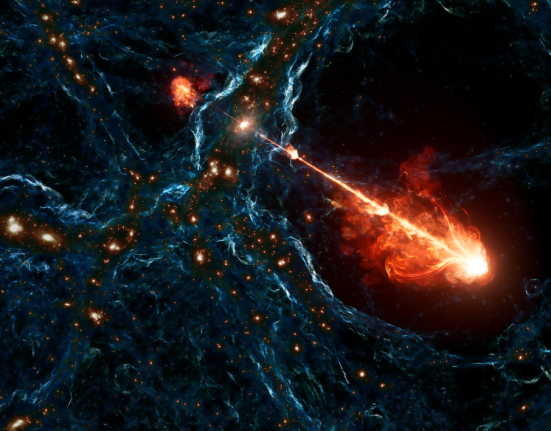
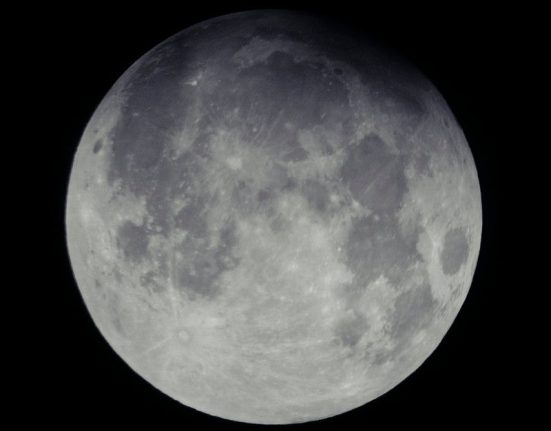

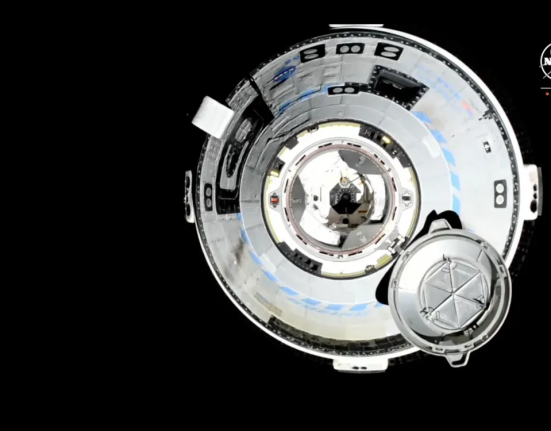

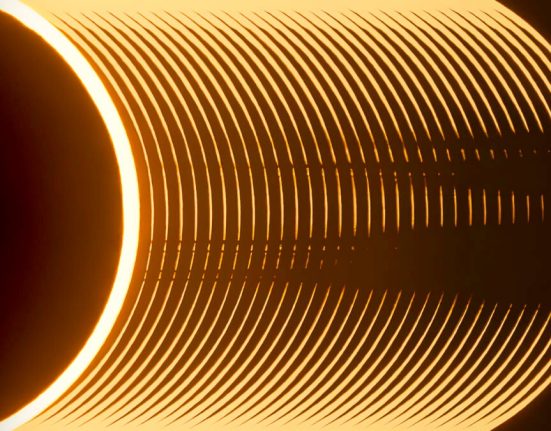
Leave feedback about this